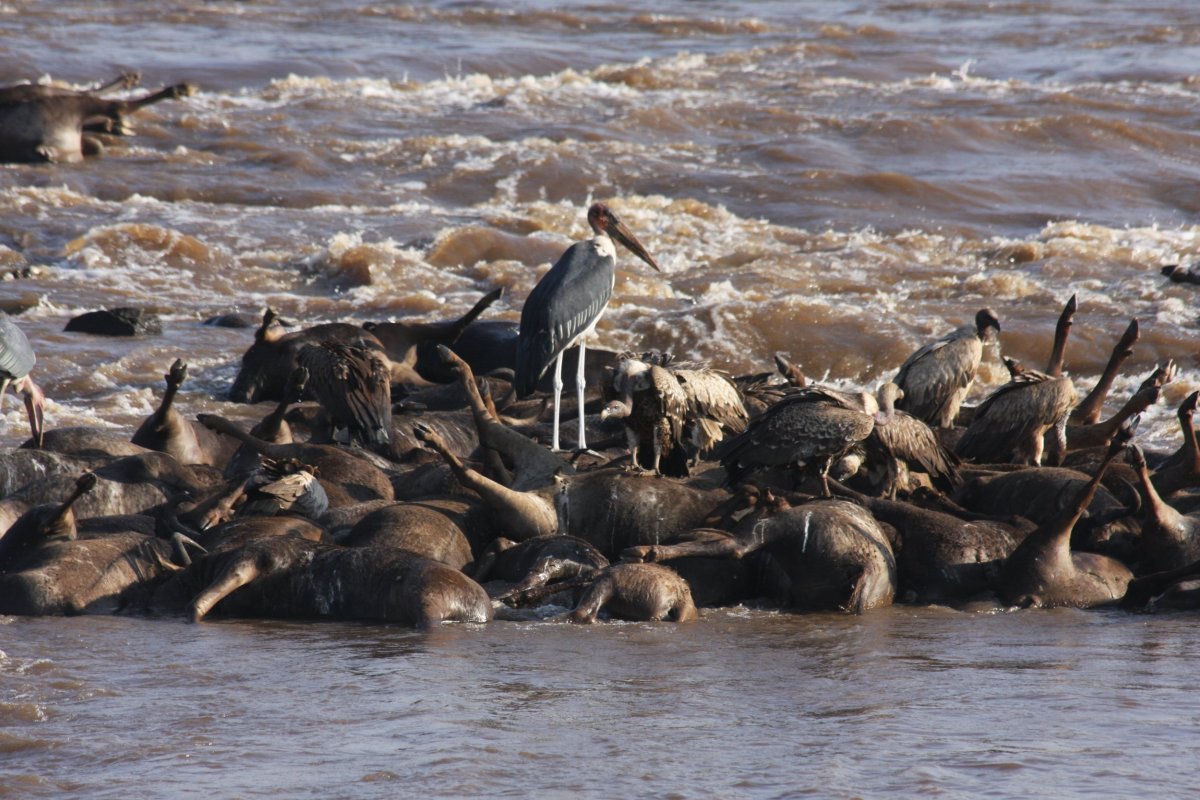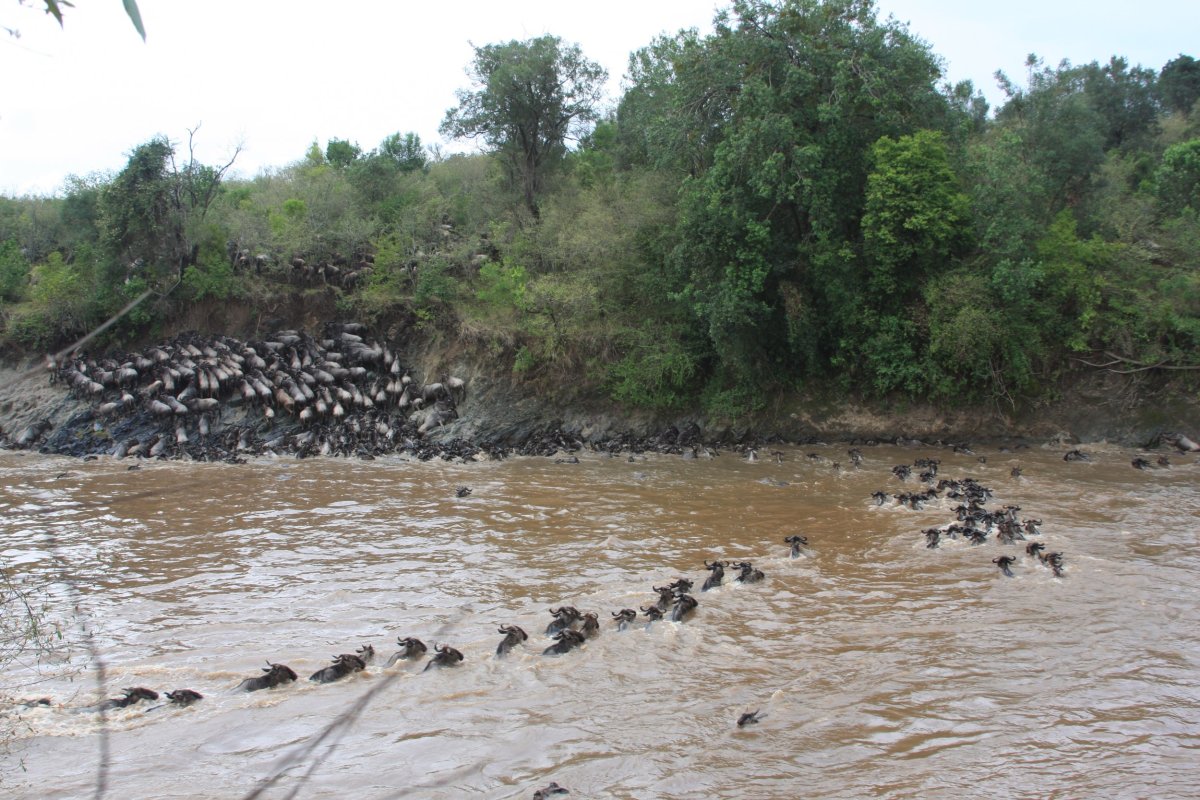
In the African Serengeti, wildebeest give rise to algae and crocodiles, and mass drownings of wildebeest are both tragic and miraculous. It's all a part of the circle of life, to borrow a phrase from The Lion King, the animated classic in which Mufasa the lion explains to his son, Simba, that everything is linked together.
"Everything you see exists together in a delicate balance. As king, you need to understand that balance and respect all the creatures, from the crawling ant to the leaping antelope," Mufasa says. To which Simba asks, "But Dad, don't we eat the antelope?" The elder lion explains that "when we die, our bodies become the grass, and the antelope eat the grass. And so we are all connected..."
Although The Lion King is not exactly a documentary, the science still flies, and it applies to the wildebeest, one of the most important prey on the Serengeti. Around 1.2 million of these creatures travel hundreds of miles each year from the Serengeti National Park in Tanzania to the Maasai Mara National Reserve and back, in the world's largest and most impressive overland migration. Along the way, the herd eats 4,500 tons of grass each day, but thousands of them are eaten by predators, providing food for every variety of carnivore and scavenger, then returning to the Earth as a vast trove of nutrients.
New research shows that wildebeest provide a huge source of nutrients to the Mara River, which runs through the Serengeti, via a perhaps unlikely angle: Upward of 10,000 of the animals perish in mass drownings just about every year, according to a study published June 19 in the journal Proceedings of the National Academy of Sciences.
The study found that the carcasses of the animals provide a long-lasting source of nutrients for the river and nourishment for algae, fish, vultures, storks, crocodiles and many other animals. During certain points of the year, wildebeest make up 50 percent of the food for the fish in the Mara. After scavengers pick the carcasses clean, the bones themselves also provide a reservoir of phosphorous that sticks around for years, says study first author Amanda Subalusky, a postdoctoral scientist at the Cary Institute of Ecosystem Studies
Wildebeest are susceptible to drowning because they pretty much blindly follow each other, Subalusky explains. So if a group heads across the river at a point where the opposite bank is steeper than expected, where the ground is slippery or where the river may be higher than they thought, tragedy can ensue. The wildebeest will keep moving forward, trampling one another, and sometimes entire herds can be lost.

Subalusky has seen this happen several times. "It's a moving thing to see... it's really tragic on the individual scale; they're panicking and crying out. Watching hundreds of animals drown, it's a horrible thing... but from an ecological perspective, and this is much less than 1 percent of the total population, it represents a large and important source of nutrients" for scavengers and the river's ecosystem.
Grant Hopcraft, a research fellow at the University of Glasgow who wasn't involved in the paper, says he's not surprised that the wildebeest provide an important source of nutrients to the river, but only because "there isn't a part of the Serengeti that that animals don't affect." He loves this study because it shows how the wildebeest are linked to the river's ecosystem, which hadn't previously been explored. Hopcraft also notes that researchers have tagged certain wildebeest, which can be tracked online.
Sadly, there are few mass migrations of this magnitude left on Earth. There were many more once, and even larger ones. For example, there are estimates that in the late 1700s there were more than 30 million bison in the western United States, and there are reports of mass drowning of the animals crossing frozen rivers, Subalusky says. In those situations, that animals probably played a similar role in providing nutrients to the riverine ecosystem.
Regarding the The Lion King, it's true that dead wildebeest return to the grass from which they come, so to speak, but in this study the researchers went further. Their work actually shows how isotopes within grass pass through wildebeest and into algae and crocodiles and vultures. "They're a living conduit of grass into the river," Subalusky says. "The ones that die in the river become algae, fish, crocodiles. But they look [chemically] like grass." The Lion King got it right.

Uncommon Knowledge
Newsweek is committed to challenging conventional wisdom and finding connections in the search for common ground.
Newsweek is committed to challenging conventional wisdom and finding connections in the search for common ground.
About the writer
Douglas Main is a journalist who lives in New York City and whose writing has appeared in the New York ... Read more
To read how Newsweek uses AI as a newsroom tool, Click here.








